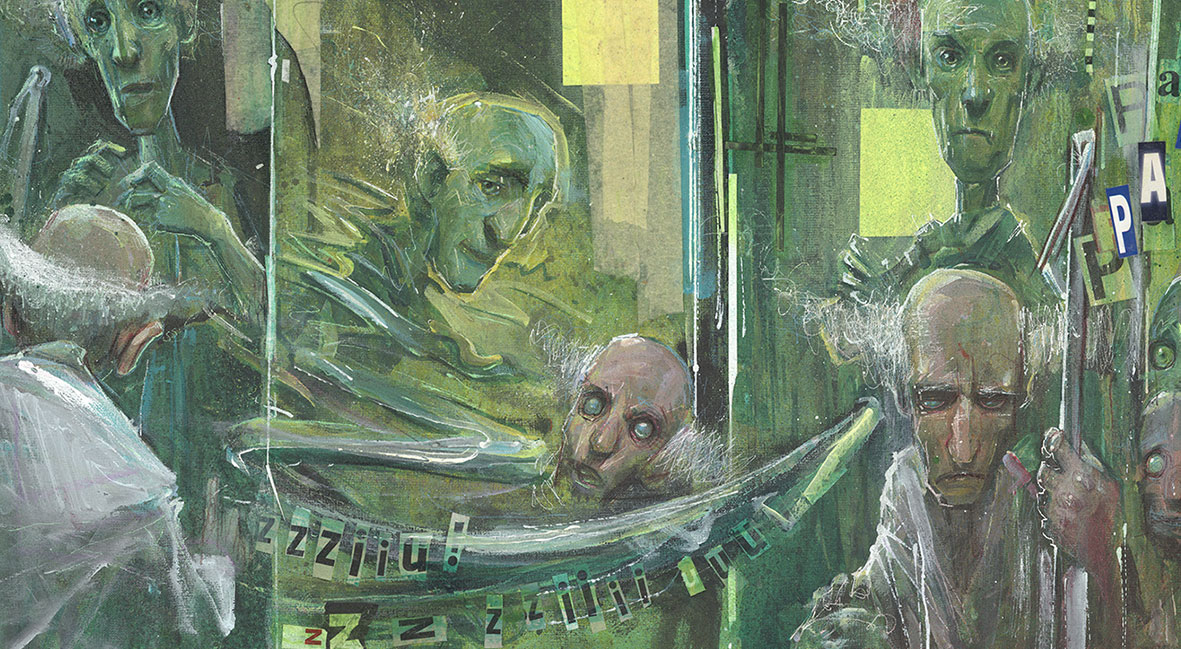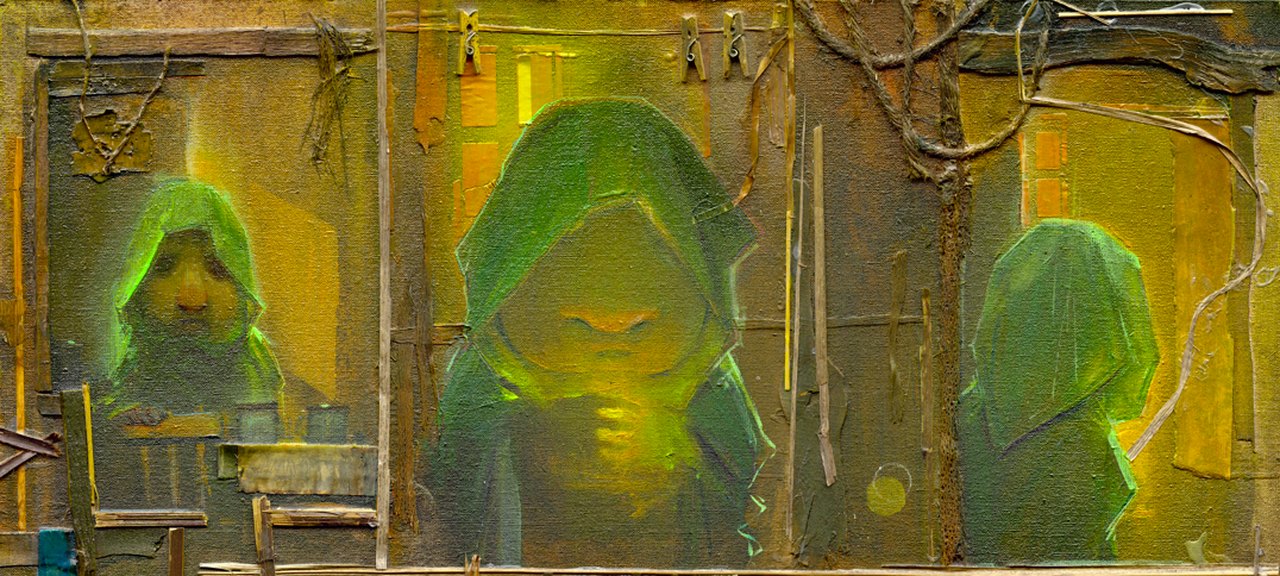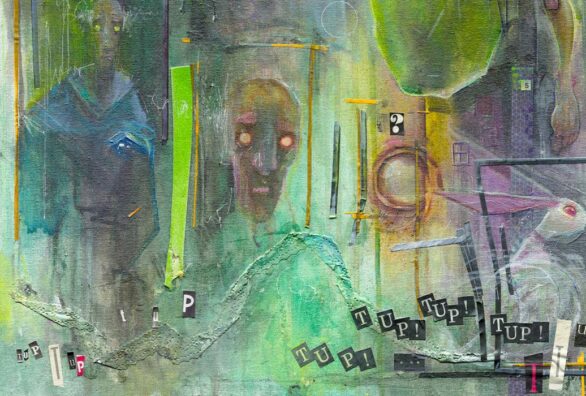
Collaboration with a comic book writer

How to write a script for a comic book?

Tales from the Ark - Visions. Karol Weber/Gedeon
Comics seem to be a casual form, typical of pop culture. It is served attractively, because in pictures, which makes it seem to win with the visual layer rather than the content. There is a bit of a point in this - issues in a comic should be concise and contain the maximum meaning, which brings to mind poetry, especially short haiku. However, dialogue or content in comic clouds is one thing, but after all, the layout of illustrations is not accidental either. In order for a story to be created and finally reach the hands of the reader, a script is essential.

TANDE. Karol Weber/Gedeon
The script in comics, by the way, has a specific character, and for at least two reasons. First, it can be the responsibility of either the author of the drawings, or a screenwriter who works with the illustrator. Then the planning of the content, that is, the plot, action, time and place, historical background and characters, is handled by the creator of the script in comics, while the transfer of his vision to paper is handled by the draughtsman, painter or graphic designer. Such a comic book, as the work of two creators, requires a special kind of agreement between them, especially so that the visual artist is able to read the screenwriter's vision flawlessly. In addition to the good intentions of the cartoonist, equally good didascalia turn out to be essential in this process, and the creation of such didascalia is already the sole responsibility of the script writer in the comic. Such a solidly prepared script, including instructions for the illustrator, properly marked dialogues, descriptions of individual scenes and even individual frames, requires a lot of work from the screenwriter. However, if the cooperation with the illustrator is to run smoothly, the latter must know the author's creative idea as well as possible.
And it must be remembered that this form, which, after all, by its very nature is on the borderline between literature and the visual arts, to be good and appreciated, it must be interesting from both the graphic and plot sides. It is of no use to have great drawings, if the story itself is told in a mediocre way, or worse, is simply uninteresting. On the other hand, things are a little different - the comic will defend itself even if the drawings are far from artistry, but on one condition: they are something. They have character, they are a distinguishing feature, and the story fits the chosen form of expression. However, always a considerable role is played by the script in comics - it is the cause of events, outlines the nature of the story, character construction and plot, which will be engaging or not for the reader, so on the scriptwriter has a great responsibility for whether the story will be successful.
So what is a script in comics anyway? It is basically a reliably written plan of work, including both descriptions of scenes and even selected frames, characterization and description of characters, content, dialogues and decent didascalia. Does it have to be a high-level artistic work? No, because it's not the kind of work that would require complex plot twists and characterological puzzles, although it's nice when a comic book screenwriter approaches his work ambitiously, doesn't overly duplicate schemes, constructs interesting personalities, and surprises with plot twists. The script in a comic book is a certain base, a foundation on which the cartoonist will work - the analogy of a designer and a contractor seems on the spot here. Both must show finesse, but the best contractor will fall if he gets a poor design, so a lot of responsibility rests on the shoulders of the writer of the script in the comic.
Of course, the natural question arises, how to write such a script in comics, so that from a sketch, from a substructure, an engaging story will emerge that captures the imagination of readers? Let's pause here for a moment to wipe the mocking smile off the faces of the doubters. This "capturing of minds" is not at all an exaggerated term, comics have great power, although this niche still seems to be underdeveloped in the domestic market. After all, it is enough to look at the United States and the famous comics of the New York publishing house Marvel: after all, this is where the real pop culture icons recognizable not only in the US, but also in Europe, such as Captain America Iron Man, Spider-Man or Hulk, come from. They are such pop culture classics today that an entire entertainment industry was born around them - from movies to collectible figurines.
It's hard for Marvel characters to deny their success, so what makes a successful story? Undoubtedly, a good script in comics, especially a neatly told story, rich in distinctive characters. States love spectacular transformations: whether it be Peter Parker bitten by a spider and, as a result of a strange mutation, saving the world from villains, or Dr. Robert Bruce Banner, who, after being irradiated, transforms into the mighty Hulk, cult heroes are created in Marvel so that the average reader can identify with the character - by the way, in reality, this hero of the story is, after all, the character's alter ego. Despite the fact that the world of comics likes to take over the fantasy, it is good not to make the stories shallow, so in the iconic ones there are various traumas behind the heroes, such as behind the aforementioned Dr. Banner, who was supposed to be a victim of domestic violence as a child.
However, the answer to the question: how to create a good script in comics? is a somewhat more complex topic. Certainly, there is no single recipe or one perfect method, because like any creative work, this one also has its own individual traits. But we can always share some practical tips, which are worth looking for in our next texts.
Related posts
Warning: Undefined variable $post_id in /home/klient.dhosting.pl/sprproject/devkomiks.sprintproject.eu/public_html/wp-content/themes/betheme-child/includes/content-single.php on line 379

Two Worlds - Rite of Passage. Karol Weber/Artur Biernacki
Warning: Undefined variable $post_id in /home/klient.dhosting.pl/sprproject/devkomiks.sprintproject.eu/public_html/wp-content/themes/betheme-child/includes/content-single.php on line 379

Tales from the Ark - Visions. Karol Weber/Gedeon